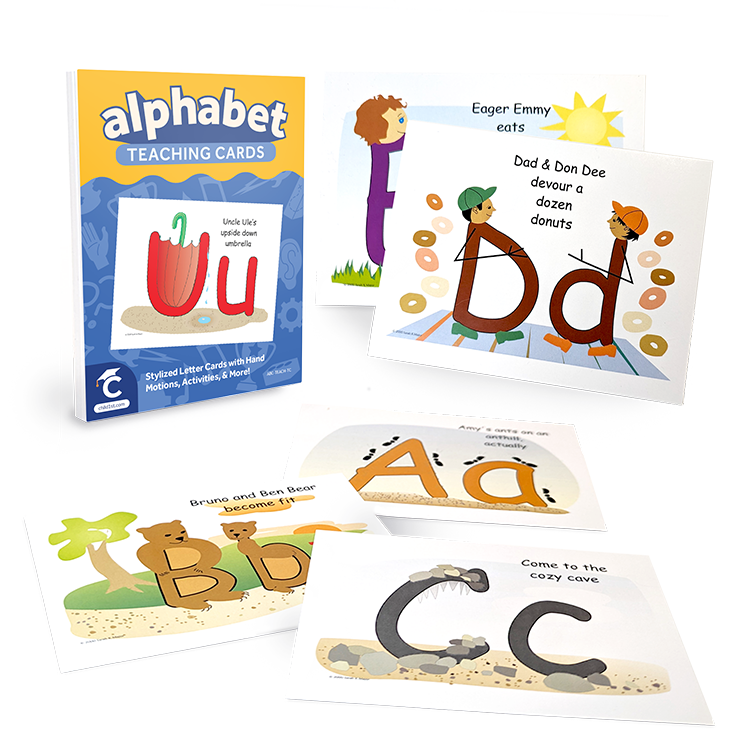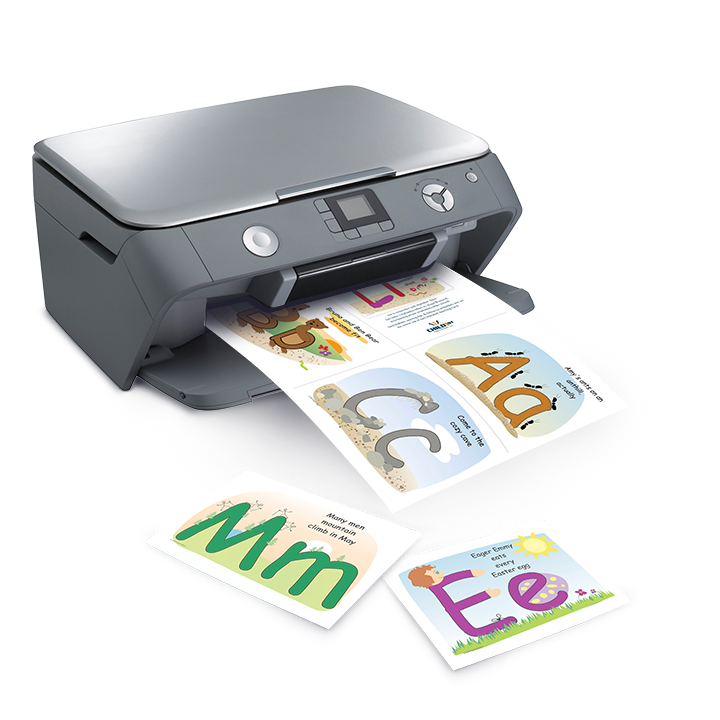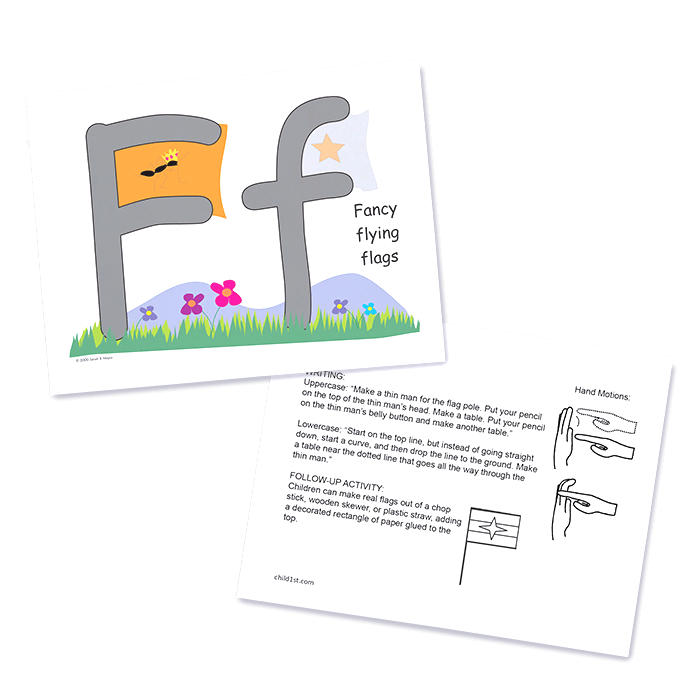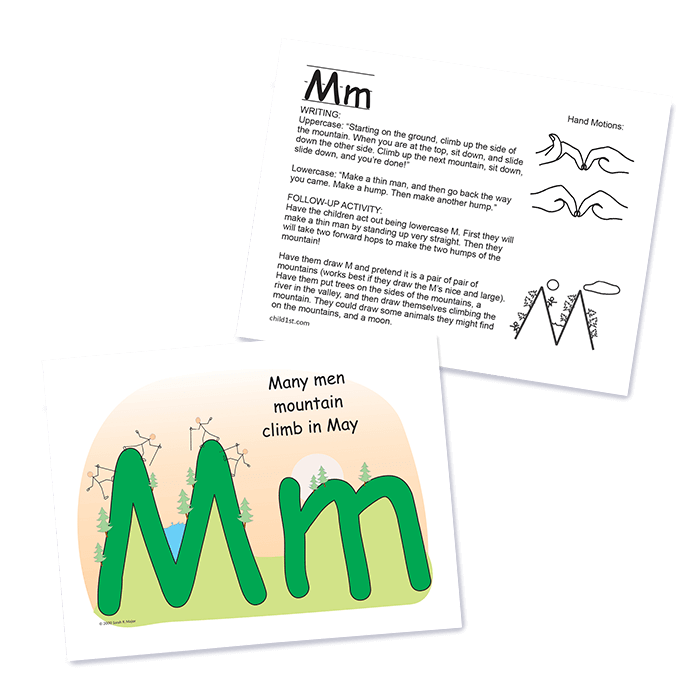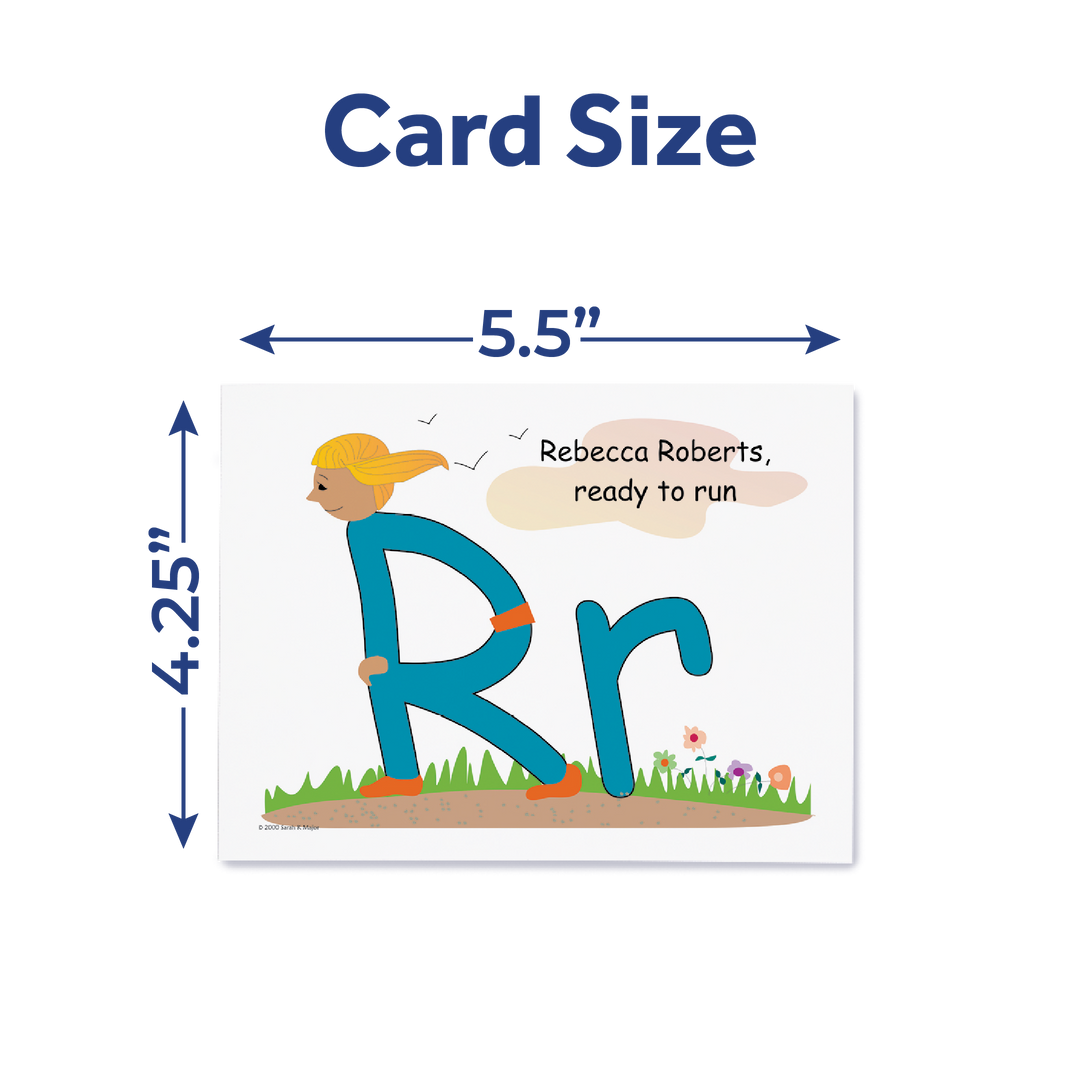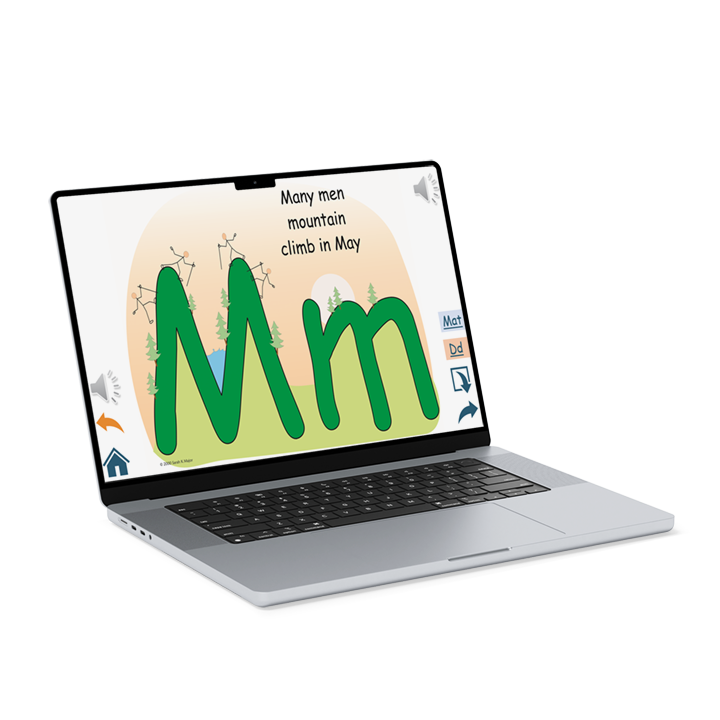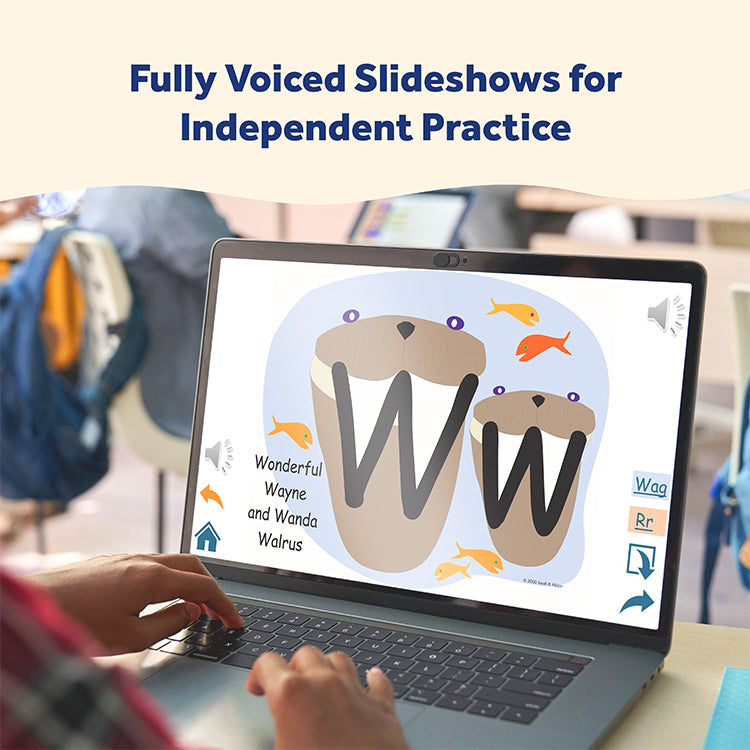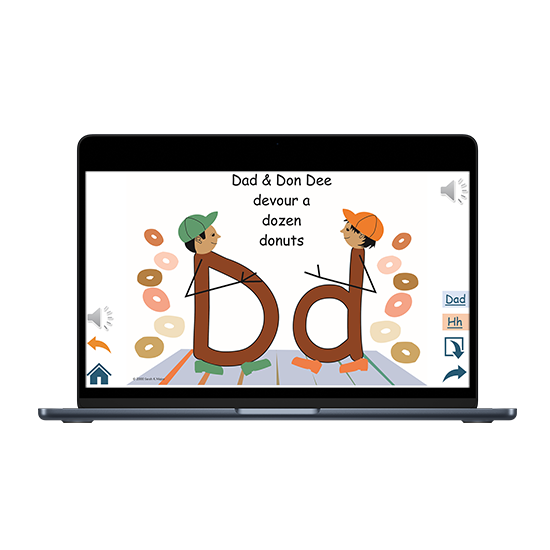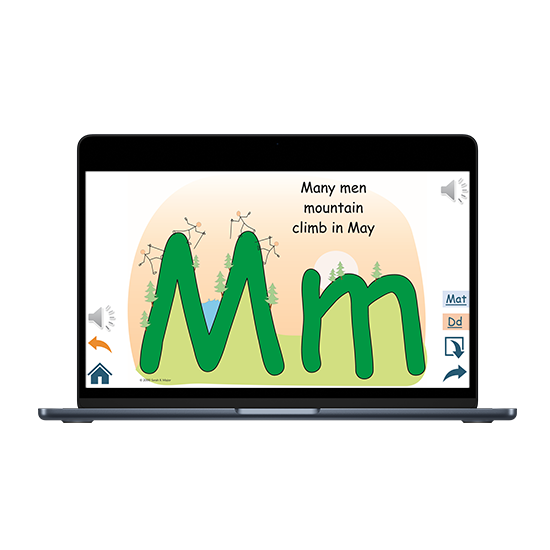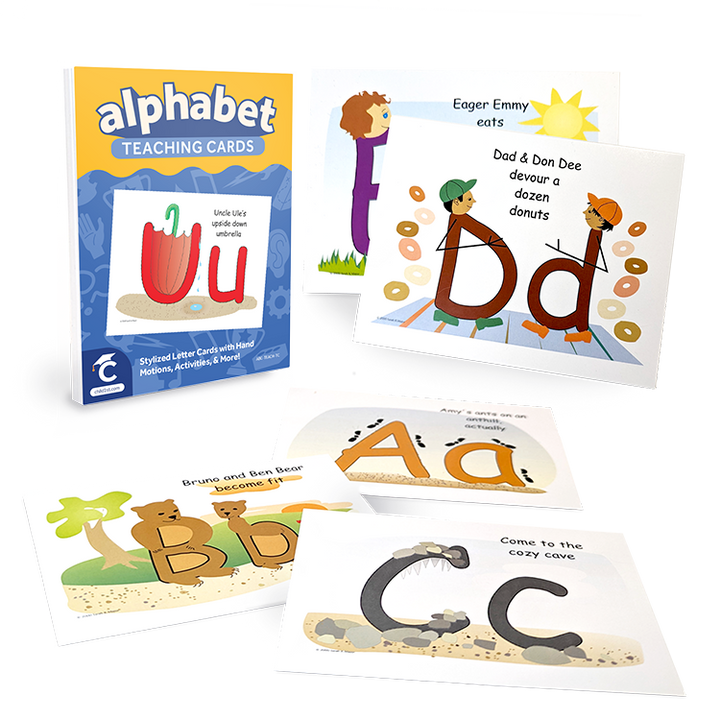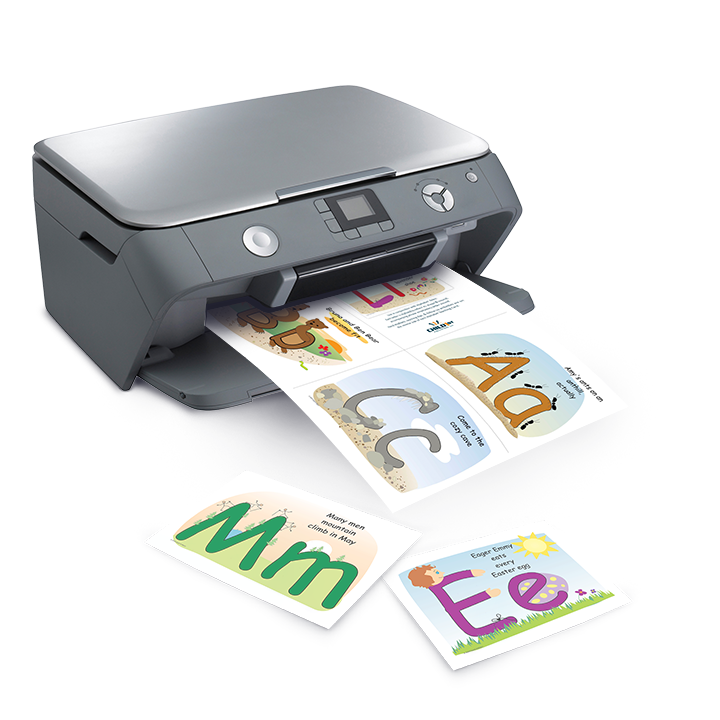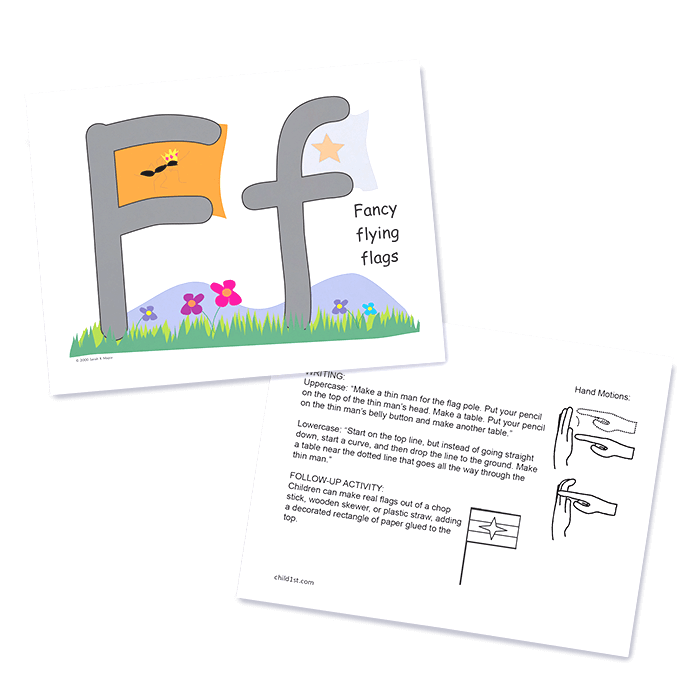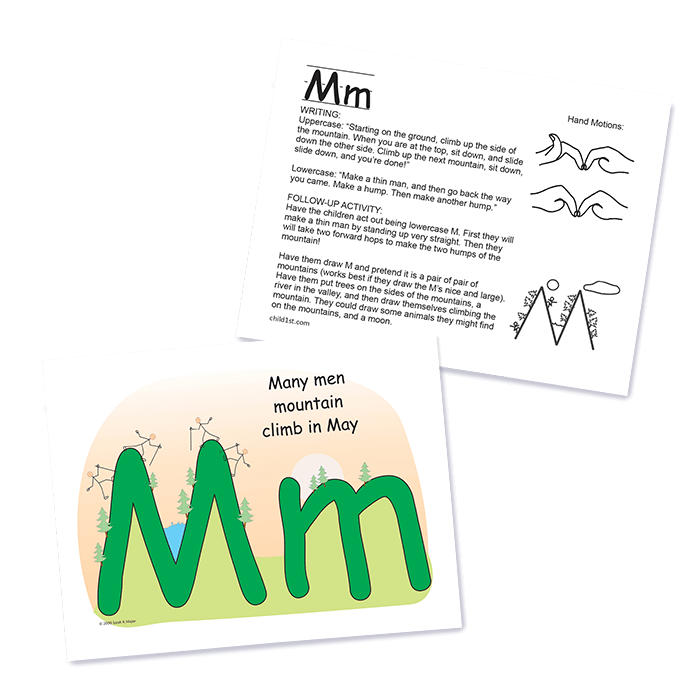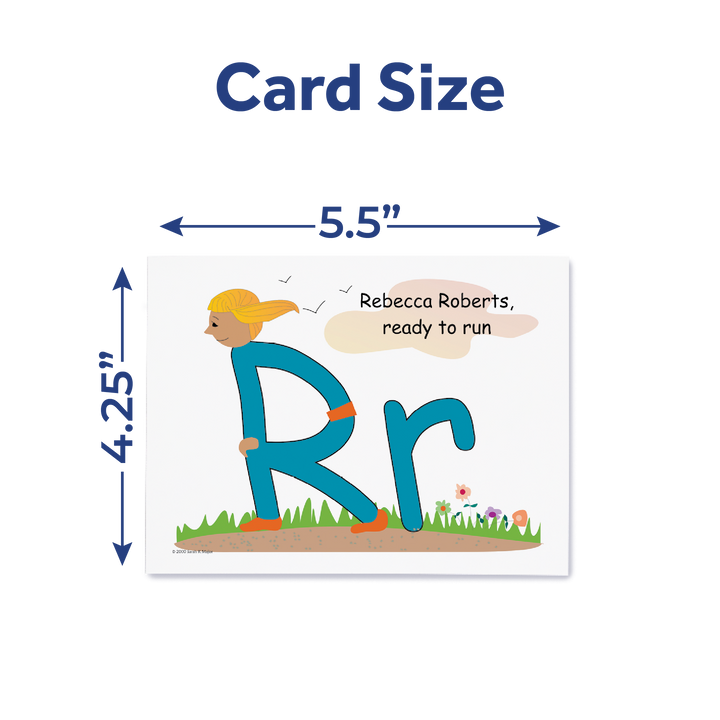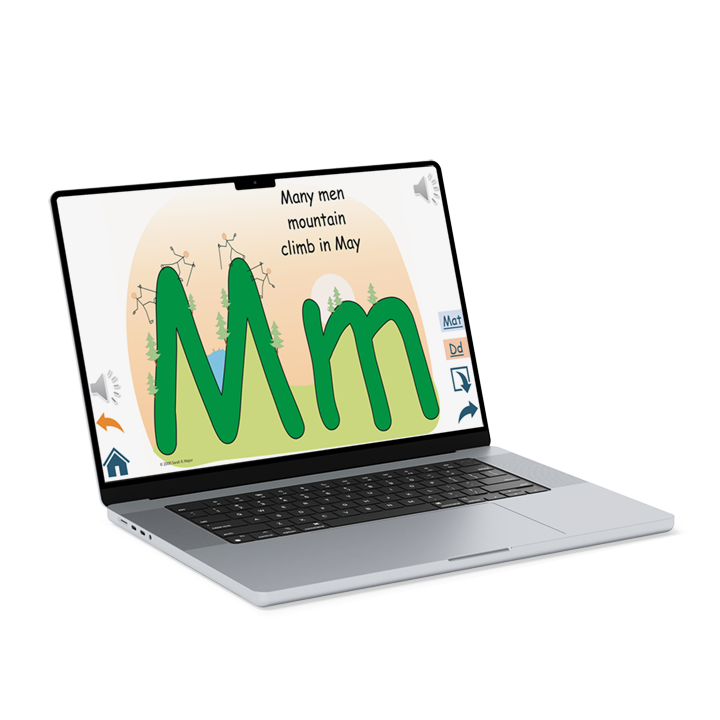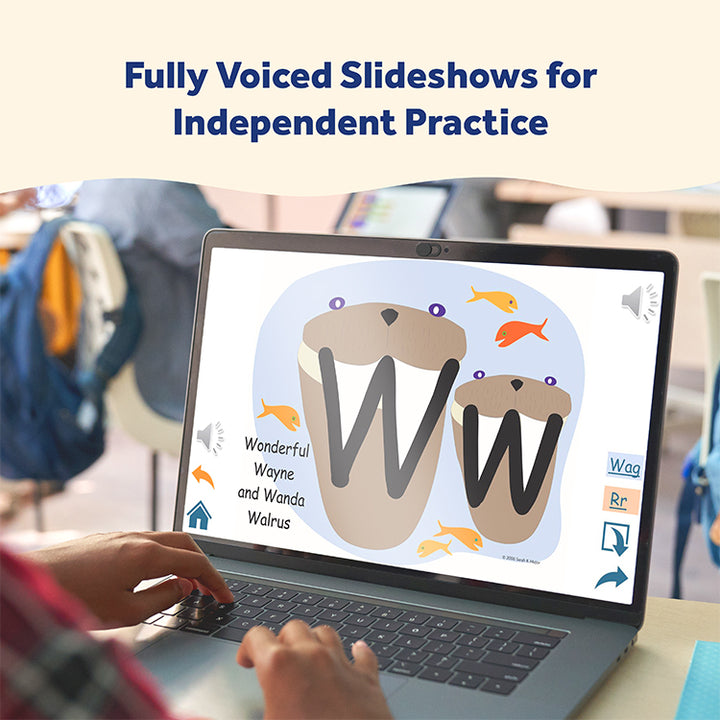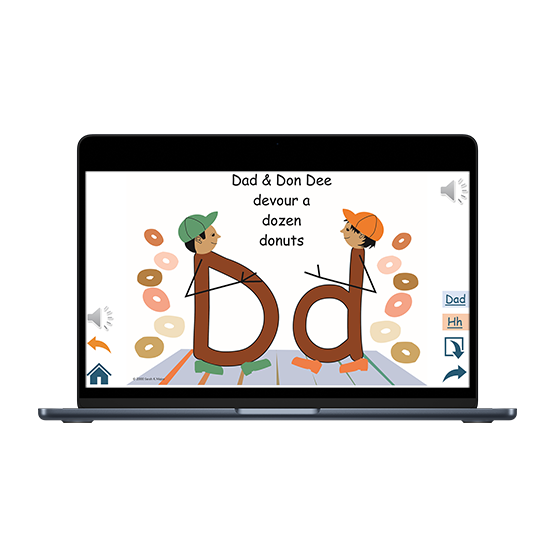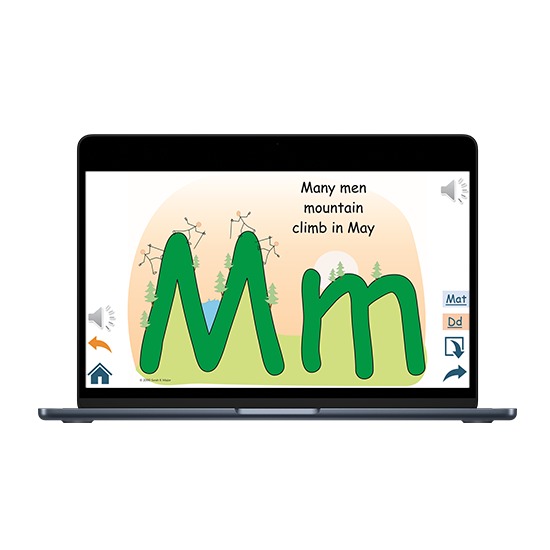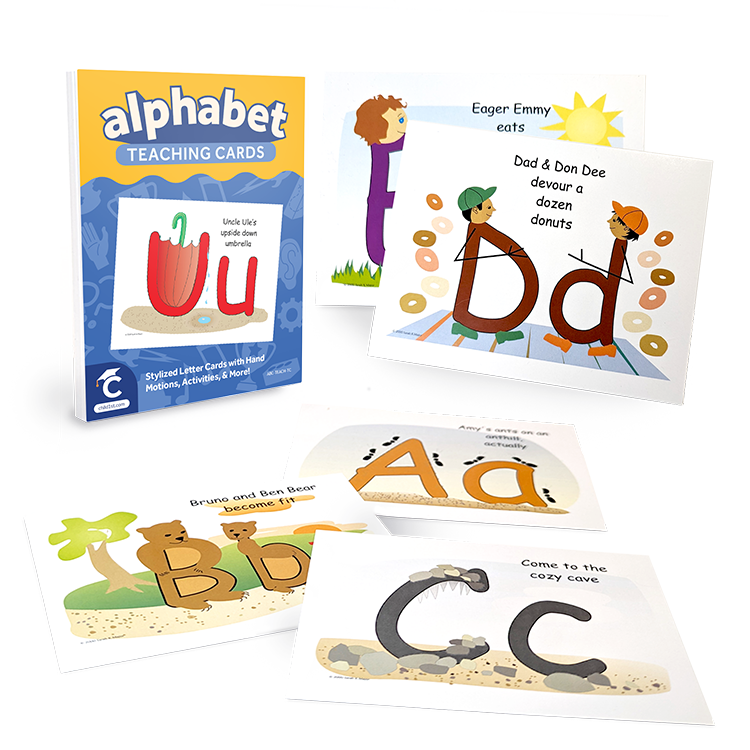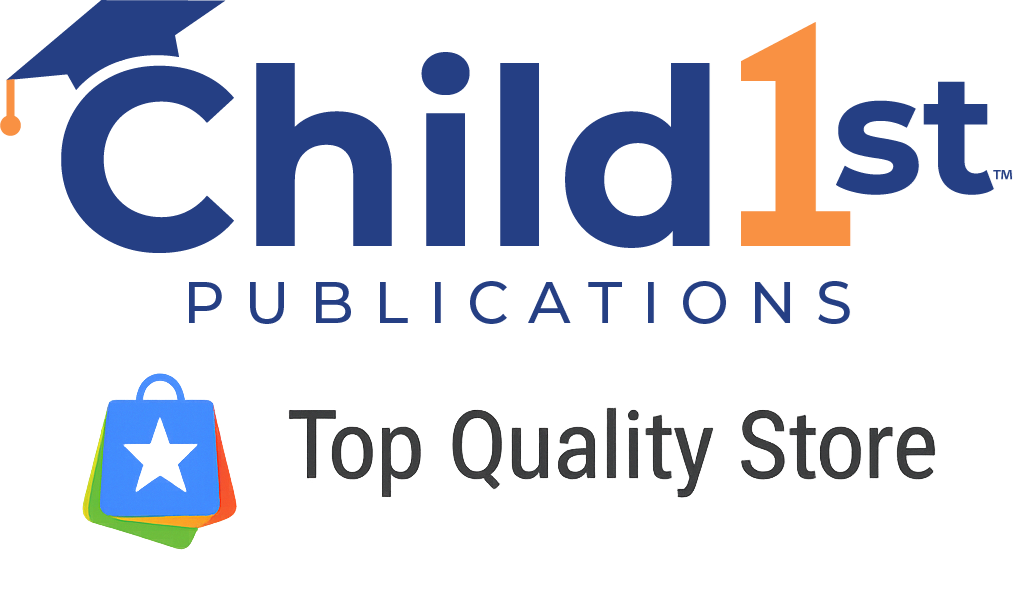Alphabet Tales were designed to enable young learners to easily identify letters of the alphabet utilizing embedded picture mnemonics (Shmidman & Ehri, 2010).
On the front, each card showcases delightful images corresponding to the title images in Alphabet Tales, captivating young learners.
Flip to the reverse side for a practical guide on teaching children to write each letter, complete with hand motion instructions.
Encourage children to engage in the tactile activities, providing time for their newfound knowledge to transition into long-term memory.
Alphabet Teaching Cards are available in three formats:
- Physical – physical cards, measuring 5.5" x 4.25"
- Download - printable PDF file of the cards
- Slideshow – includes PowerPoint format with audio
Long-Term Applications
Incorporate the cards into various learning activities, ensuring flexibility in their use based on the needs of your students.
Use the cards in one-on-one sessions, small group activities, or as part of larger classroom instruction.
Periodically review the cards to reinforce letter shapes, sounds, and associated hand motions.
Encourage students to use the cards independently as a self-paced learning tool.
Make the learning experience interactive by involving students in discussions about the characters and stories associated with each letter.
While the Alphabet Teaching Cards were designed to supplement Alphabet Tales, they can be used independently or as a complement to other alphabet materials.



